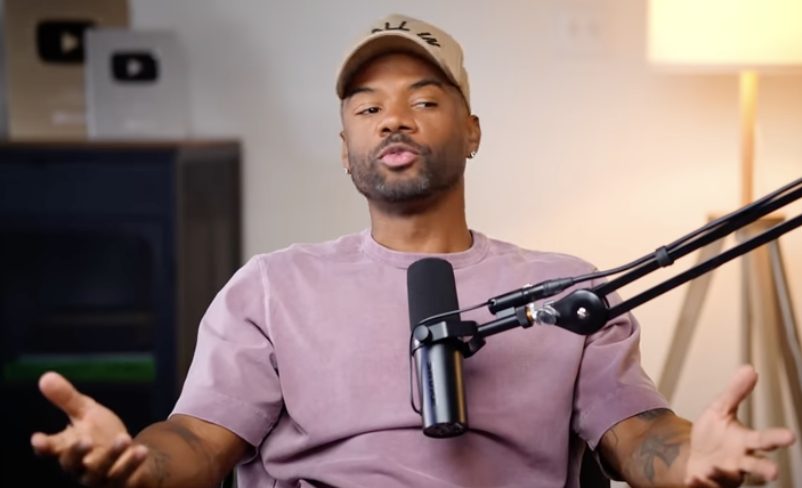As a content creator and entrepreneur, I’ve seen firsthand how many creators miss significant monetization opportunities. After listening to Omar Eltakrori share his insights on building a personal brand and monetizing online platforms, I’m convinced that content creators need to rethink our approach to content creation.
The truth is stark: every creator needs to have a digital product. We’re living in an era where anyone can build their own stage, yet so many of us focus solely on growing an audience without a clear monetization strategy.
The Power of Digital Products
Digital products represent one of the most overlooked opportunities for content creators. Any information you have can be packaged into something valuable: ebooks, mini-courses, templates, swipe files, or even audio guides.
What makes digital products so powerful is their scalability. Once created, they can be sold repeatedly with minimal additional effort. For new creators, starting with a simple ebook priced at $37 builds confidence and creates immediate revenue streams.
The beauty of digital products is that you can repurpose the same content in different formats. That ebook you created? Transform it into a mini-course with video explanations and charge $297 or even $497. Same information, different format, higher perceived value.
Creating Your Own Stage
Many creators dream of speaking on stages or being featured on popular platforms. While these opportunities are valuable, I’ve learned that building your own stage is often more powerful.
My podcast recently got 55,000 views on a single episode. That’s 55,000 people I reached without traveling or waiting for someone else’s permission. Virtual stages offer several advantages over physical ones:
- Complete control over your environment and presentation
- Ability to repeat and refine your delivery
- No travel costs or scheduling constraints
- The opportunity to record and repurpose content
- Direct access to your audience without gatekeepers
When you create your own stage through webinars, workshops, or online events, you can deliver value on your terms while building an audience that trusts your expertise.
The VIP Package Opportunity
One monetization strategy that has transformed my business is offering VIP packages to podcast guests. Most creators miss this opportunity entirely.
Think about it: guests come on your show because they want the content. Yet most won’t watch the episode when it’s published, make clips, or repurpose it effectively. By offering a VIP package with all files, edited clips, and custom commercials, you provide tremendous value while creating a new revenue stream.
You can charge $350-$1,000 depending on your production quality. This approach works because it solves a real problem for your guests – they need the content but lack the time or skills to maximize it.
The Content-Campaign-Conversion Framework
After years of trial and error, I’ve found that successful monetization comes down to three elements: content, campaign, and conversion.
- Content: Choose one primary platform (I recommend YouTube for its searchability and longevity) and create consistently
- Campaign: Develop a clear customer journey with a specific offer as your focus for 3-6 months
- Conversion: Master the art of turning viewers into customers through strategic calls-to-action
The power lies in picking one campaign to focus on rather than trying multiple approaches simultaneously. When I finally committed to one signature talk, one challenge, and one core offer for an entire year, I had my first seven-figure year in business.
Avoiding the “Overteaching” Trap
One mistake I see creators make repeatedly is overteaching. This happens when you provide too much information without giving the audience time to process or engage. Signs you might be overteaching include:
- Talking for extended periods without audience interaction
- Using excessive jargon or technical terms
- Having too many slides with too much information
- Failing to include stories or examples that illustrate your points
- Not leaving space for questions or engagement
The solution isn’t to provide less value but to deliver it more effectively. Use call-and-response techniques, incorporate stories, and focus on transformation rather than information overload.
Embracing the Journey
Mastery in content creation and monetization doesn’t happen overnight. It comes from consistent practice and a willingness to learn from both successes and failures. Content creators work harder than you may think.
I’ve had my share of flops – presentations where no one showed up, technical difficulties that derailed workshops, and collaborations that didn’t go as planned. Each experience taught me valuable lessons that improved my skills.
The path to success isn’t about avoiding failure but embracing it as part of the journey. Each presentation, podcast episode, or workshop is an opportunity to refine your message and delivery.
We need to change our metrics from views and likes to consistent creation and improvement. When you focus on providing value and developing your skills, the money follows naturally.
As content creators, we have unprecedented opportunities to build businesses around our knowledge and expertise. By creating digital products, building our own stages, and implementing strategic campaigns, we can turn our content into sustainable income streams.
The question isn’t whether you can monetize your content – it’s whether you’re willing to take the steps necessary to do so effectively.
Frequently Asked Questions
Q: How do I decide what type of digital product to create first?
Start with something that addresses a specific problem your audience faces and that you can create relatively quickly. For most creators, an ebook or guide priced around $37 is an excellent starting point. This allows you to test your market while building confidence in your ability to sell digital products.
Q: Is it really possible to make money from a small audience?
Absolutely. One of the examples shared was of someone who had only 21 people attend their webinar, which led to four people joining a workshop, and ultimately one person purchasing a $14,000 coaching package. The size of your audience matters less than their engagement and your ability to solve their problems.
Q: How often should I be creating content to see results?
Consistency matters more than frequency. While creating daily content can accelerate your growth, what’s most important is establishing a regular schedule you can maintain. Focus on quality over quantity, especially when starting out. As you develop systems and get more comfortable with creation, you can increase your output.
Q: What’s the best way to sell my digital products without feeling pushy?
The most natural way to sell is by focusing on the transformation your product provides rather than the product itself. Use stories to illustrate problems your audience faces and how your solution helps. When you genuinely care about helping people overcome challenges, selling becomes an act of service rather than something pushy.
Q: How do I create my first online workshop or webinar?
Start simple with a free Zoom account. Create a registration link, promote it to your existing audience, and prepare a presentation that delivers genuine value while naturally leading to your offer. Don’t worry about perfection – focus on delivering helpful content and improving with each session. You can use tools like Canva for simple slides and gradually enhance your production quality as you grow.







